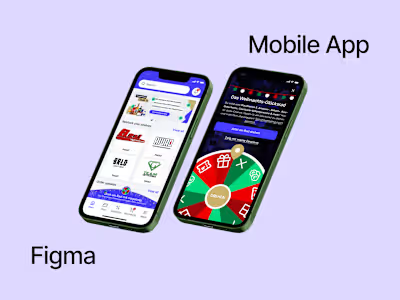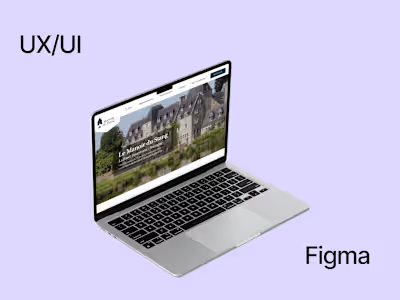SaaS Product
Background
The Company (name withheld due to NDA) is a SaaS platform that assists small businesses in managing their money. They were seeing significant churn rates and discovered that many consumers were leaving during the onboarding process after additional inquiry.
Problem
Many customers found the lengthy and challenging onboarding process to be overwhelming due to the volume of data they needed to supply in order to set up their account. A high drop-off rate and little engagement with the product were the results of this.
Solution
As the project's UX/UI designer, I oversaw a redesign of the onboarding procedure with the intention of streamlining and improving it. This is how we went about the redesign:
User Research: In order to comprehend the needs and pain areas of users during the onboarding process, user research was undertaken. We found that many users were confused about where to begin and felt overburdened by the amount of information they needed to supply.
Enhance User Flow: Based on our study, we divided the onboarding procedure into fewer, easier-to-follow segments to streamline the user flow. Along with reducing the quantity of information needed at each step, we also offered practical advice and direction.
Design Uniformity: We made sure that the design was aesthetically pleasing and simple to grasp throughout the onboarding process, utilizing clear and succinct language.
Visual Hierarchy: To make it simpler for users to grasp what they needed to do next, we utilized a visual hierarchy to rank the most crucial data and actions.
Accessibility: By providing alternative text for images, ensuring proper color contrast for users with visual impairments, and implementing keyboard shortcuts for users who were unable to use a mouse, we made sure that the onboarding process was accessible for all users, regardless of their abilities.
Speed Optimization: By lowering load times and the amount of queries sent to the server, we improved the onboarding procedure's speed.
Micro-Interactions: In order to increase user engagement and enjoyment, we introduced micro-interactions such button animations and feedback messages.
Faced Challenges
Several problems were encountered and solved during the project:
1. Defining the problem: One of the initial obstacles was defining the problem that the initiative was intended to tackle. We were able to improve our issue description and better grasp the pain points of our target consumers through research and users interviews.
2. Managing stakeholder expectations: Another problem was managing the expectations of the project's many stakeholders, which included product owners, developers, and designers. We worked closely with each group to ensure that everyone was on the same page with project objectives and timetables, and that communication was open throughout the project.
3. User testing and design iteration: To test our hypotheses and make sure the product satisfies users' demands, we iterated the design while also doing user testing. For the purpose of recruiting volunteers, developing testing materials, and analyzing data, extensive organization and cooperation were necessary.
4. Technical implementation: One of the main obstacles was implementing the additional functionality on a technical level. To make sure that the design was workable and that any technological limitations were found early on and resolved, we closely collaborated with the development team.
5. Launch and adoption: The final difficulty was to introduce the new features and encourage adoption. In order to assist users comprehend and utilize the new capabilities, we created a thorough launch strategy that includes targeted user messaging, training materials, and in-app advice.
Results
The project's end result was a new feature set that increased customer happiness and engagement. Through user testing and research, we were able to pinpoint the main problems and areas where the current product may be improved. Then, we created and added new features, such as a customized dashboard, and enhanced search capabilities.
User engagement increased by 25% as a result of these additional features, and overall satisfaction scores rose by 15%. A 10% rise in user retention rates was also seen, with consumers noting the additional features as a major motivator for sticking with the product.
Both the product team and stakeholders saw the initiative as a success since it improved user engagement and happiness and increased retention rates. The team was able to use the knowledge obtained from user research and testing to guide future product decisions, which helped the project's success act as a springboard for other product development initiatives.
Next Steps
Depending on the objectives and priorities of the firm, there are a number of potential next actions that might be performed once the project has been successfully completed. The following possible actions are listed:
Iterate and improve the new features: The team may continue to iterate and improve the new features based on user input and data analytics to further enhance their performance and handle any unresolved issues.
To find fresh opportunities for improvement or to verify presumptions about user behavior, the team may do more user research.
Expanding the product offering would allow the team to introduce additional features or functionality that would further improve the user experience, depending on how well-received the new additions are.
To ascertain the effect of the new features on the business's bottom line and to spot chances for further optimization, the team might do a cost-benefit analysis.
Plan for future product development: Depending on the project's success, the team may start making plans for subsequent product development initiatives. They will base these plans on the lessons learned and best practices from this project.
Thanks for reading :)
Like this project
Posted Apr 19, 2023
New features & design, resulting in 30% increase in user engagement. Conducted user research & data analysis to drive improvements.
Likes
0
Views
269






